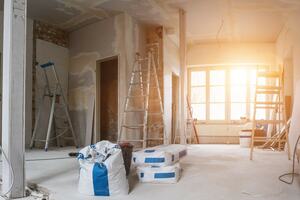How People Are Making Money From Property Flipping
Share
Copy Link

Property flipping isn’t on everyone’s bucket list; we know that. But if you’re reading this article, you’re at least a little curious about how people are making so much money from it—and trust us, people are making a lot of money from it.
Still, we know the process is anything but straightforward. Below, we’ll talk you through how people are doing it and how they’re making so much money from it.
The Upfront Investment
Let’s start with the elephant in the room—the upfront investment.
You can’t simply walk into a property flip project. You’ll need a significant upfront investment and a new mortgage or financing agreement to put a deposit down on the property. The only saving grace is that most properties that people class as having property flipping potential are lower in value.
For context, £289,818 was the average market price for houses in the UK in early 2024. This signals that a good amount of capital is required just for securing the property before any renovations can even take place. But that was your average UK home. The average property flipping home will be considerably less. The issue, again, however, is that you can expect to pay between £43,530 and £110,350 for a full renovation of a 2-3 bedroom house—those are the statistics.
Still, don’t let it put you off. Buyers with lower capital can still pursue property flipping using bridging loans since they are higher in interest for short-term finances.
Don’t forget to consider additional costs like stamp duty and legal fees.
Finding the Right Property
Flippers usually purchase houses in areas that are soon expected to boom or properties with a huge potential for enhancement.
Some common methods for sifting through houses include auctions, repossessions, and sales that are well below market value in the UK. Auctions are probably the best way to go to get the lowest-priced property. Market research is definitely essential: you need to know what makes a property better for resale. For example, by upgrading the kitchen and installing an Aga stove oven or the bathrooms and swapping a bath to a walk-in shower, you can make a property more appealing. Another biggie in 2025 is making it energy-efficient.
Another important point to consider is the time of entering the market. If you want to maximise your return on investment, enter the market while house prices are on the rise because it would make profit churning easier.
Maximising Profits
Flipping means making cost-efficient changes that maximise return on investment. There is no need to install luxurious upgrades when repainting the walls to a neutral, more sellable tone, installing sparkling new flooring, and updating the fixtures is enough. These changes are relatively cheap but enhance the appeal of the property massively.
A good level of cash should also go into adding insulation, getting double-glazed windows (or triple), or installing a renewable energy system. Still, don’t forget that every improvement should be proportional to the local market expectations.
The Selling Stage
Once the renovations are done, we’d recommend selling the property as fast as possible. To do so, find experienced estate agents that will provide insight on the local market and assist with pricing the property accordingly.
Having professional staging done and high-quality photography is useful for attracting buyers—how people sell their homes with some pictures you see on Rightmove is beyond us. In marketing materials, you should explain the new appliances, modern interiors, or energy-efficient upgrades and recover a higher asking price.
Property flipping investments are great, but we haven’t been shy in telling you it’s a big task. If you have the upfront funds and can cover the cost of renovations, we’d definitely recommend doing it. The first step is having a passion for it!
Published: February 14, 2025


